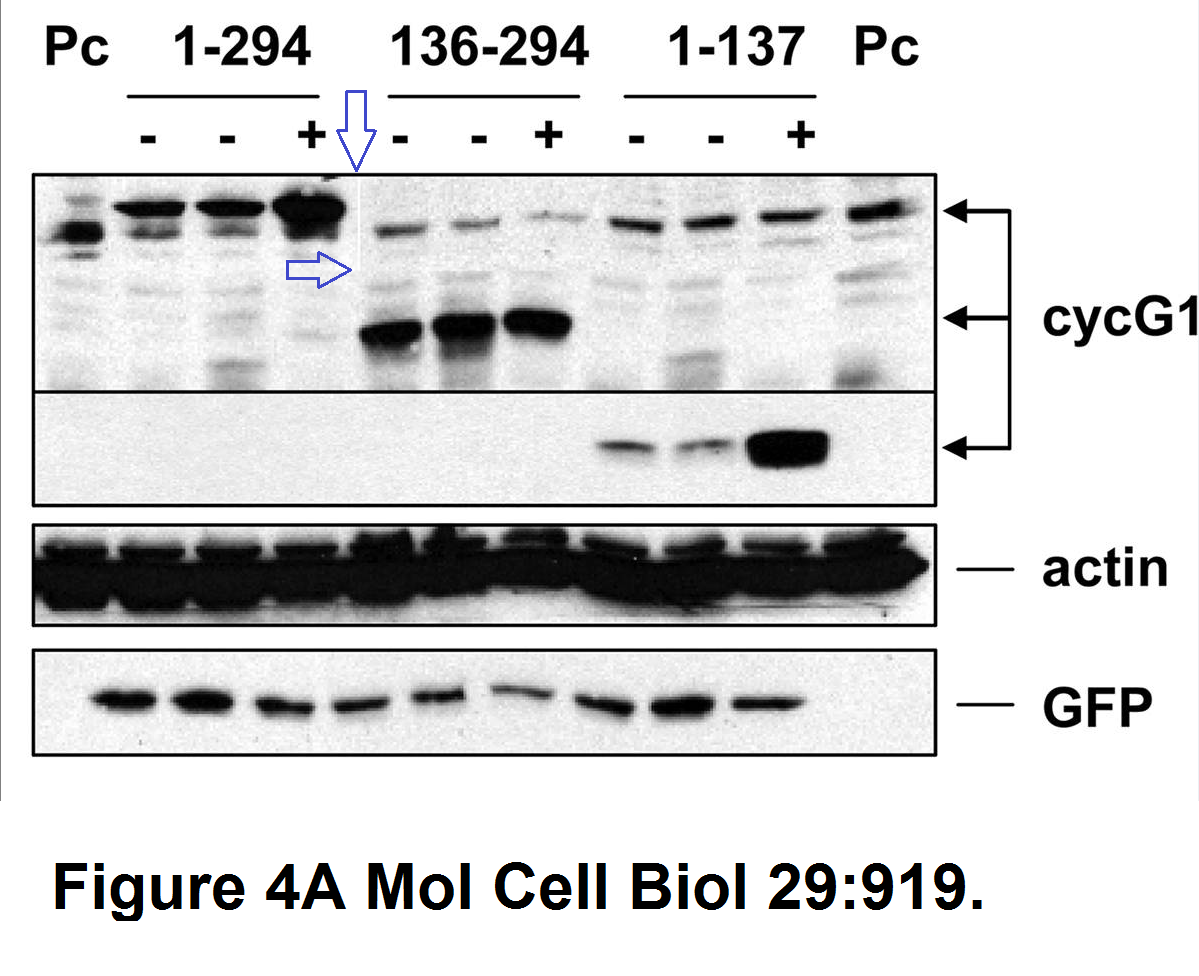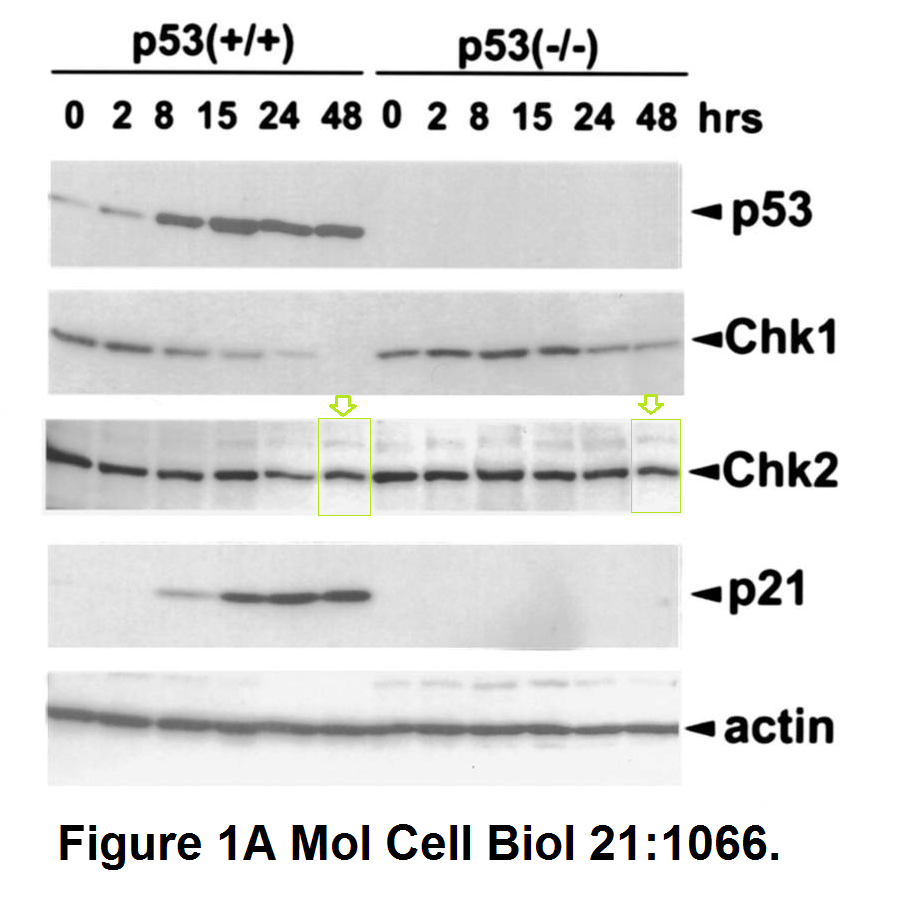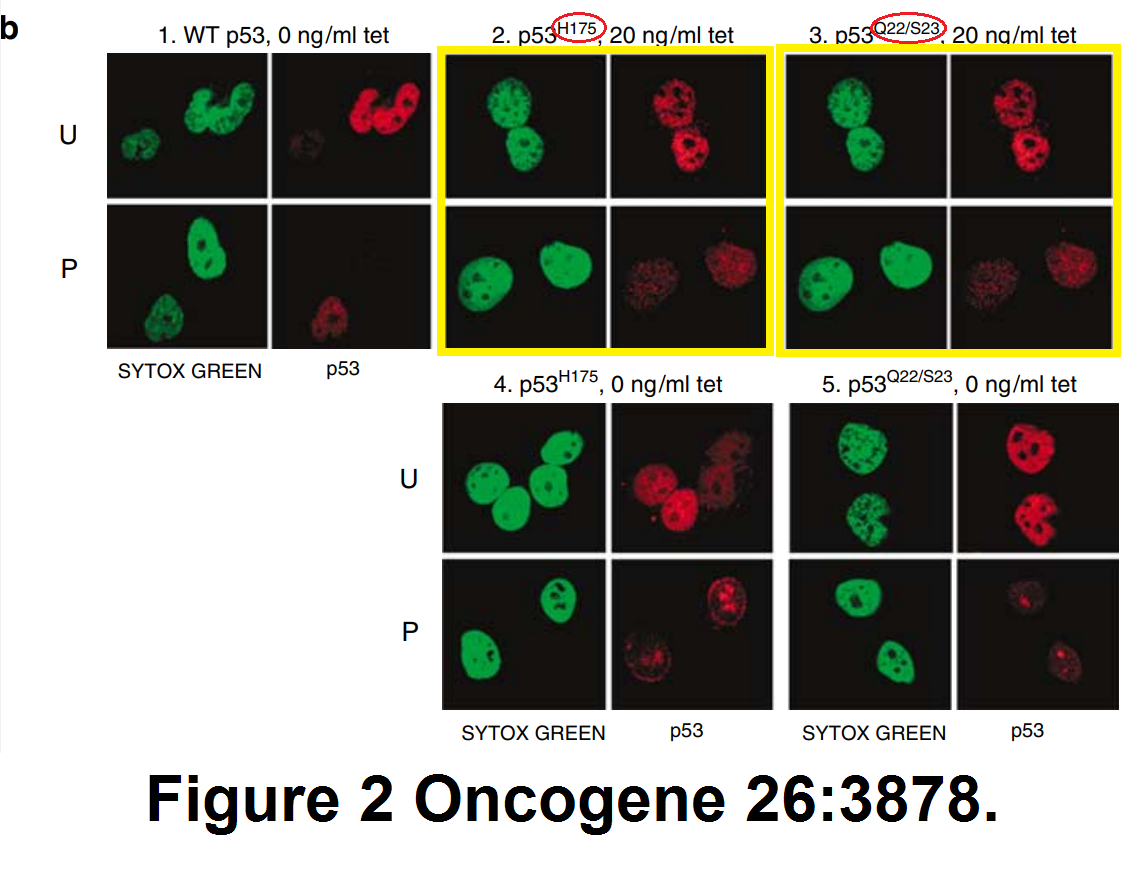Recent news brought us yet another retraction of the Spanish zombie scientist Susana Gonzalez, formerly famous for her impactful ERC-funded research into stem cells and ageing. It is her fifth retraction (others here), and meanwhile Gonzalez is not even a zombie scientist anymore. She has no research group in her new Madrid institute, noone in Spain wants to work in the same building with her, in fact though she is still formally employed with the Spanish Consejo Superior de Investigaciones Científicas (CSIC), it seems she stopped coming to work long ago, being on an endless sick leave. Even the European Research Council (ERC), usually most accommodating with research misconduct of their elite grant recipients, didn’t know what to do with Gonzalez suspended €2Mn grant and eventually terminated it.
The recent Gonzalez retraction at the Molecular and Cellular Biology (MCB) is interesting in two aspects. First, Retraction Watch previously chastised the journal in a headline for allegedly refusing to investigate evidence of data manipulations in papers older than 6 years (read here). No reference is made to that “smear” accusation in the current Retraction Watch article on Gonzalez retraction. But the second aspect is really much more intriguing. The retracted MCB paper, from Gonzalez period as postdoc at the Memorial Sloan Kettering Cancer Center (MSKCC) in New York, was coauthored by the US researcher Carol Prives, professor at the Columbia University in New York, and specialist for the cell cycle control protein p53:
Susana Gonzalez1, Carol Prives2 and Carlos Cordon-Cardo1
p73α Regulation by Chk1 in Response to DNA Damage
Mol. Cell. Biol. 2003 doi: 10.1128/MCB.23.22.8161-8171.2003
1Division of Molecular Pathology, Memorial Sloan-Kettering Cancer Center, New York, New York 10021
2Department of Biological Sciences, Columbia University, New York, New York 10027
The retraction note went:
“After publication, this article was found to have problematic figures. Digital experts have informed us that some of the published data in this paper were very likely digitally manipulated. This represents a major deviation from established scientific standards for publications, and therefore we retract this paper. We apologize for these errors”.
Well, who did those manipulations? The middle author Prives told the Spanish newspaper El Pais:
“Other study’s co – author in the US, Carol Prives, head of a laboratory at Columbia University, did talk to us and recanted: “I knew nothing about the experiments and manipulation of data in the study of González and others. And I’m convinced that Carlos Cordon-Cardo had absolutely nothing to do with making up data,” says Prives, who is also a world leader in basic cancer research. For this American scientifist, manipulation of study that she co-authored in 2003 is “obvious””.
Prof Prives, elected member of National Academy of Sciences and Fellow of AACR, now an innocent victim of other’s misconduct? Maybe. However, I was contacted by the well-known data integrity sleuth, the pseudonymous “Claire Francis“, whose evidence over years damaged or even stopped many cheater careers in science. Claire Francis alerted me to the evidence he (or she, if you prefer) posted on PubPeer regarding papers by Prives which Gonzalez had absolutely nothing to do with. In particular, Claire Francis sent me this evidence:
V. Gottifredi, S.-Y. Shieh, Y. Taya, C. Prives
p53 accumulates but is functionally impaired when DNA synthesis is blocked
Proceedings of the National Academy of Sciences (2001) doi: 10.1073/pnas.98.3.1036

There are more issues in this paper and there are more Prives papers flagged on PubPeer. The list includes yet another MCB paper from Prives lab, Li et al 2009, where gels were assembled from pieces in a most inappropriate fashion:

Again, same journal MCB, same first author Gottifredi, again from Prives lab, Gottifredi et al 2001:

There are more papers by Vanesa Gottifredi (now group at Fundación Instituto Leloir in Buenos Aires, Argentina) on Pubpeer, some with Prives, some without. Did Prives know of those things? She seemed rather naive with Gonzalez, so who knows.
This paper Kass et al 2007, in Journal of Biological Chemistry (JBC) has neither Gonzalez nor Gottifredi on it, but Prives is again last and corresponding author:

There is plenty more suspiciously spliced gels from Prives lab at Columbia University (e.g., Gaiddon et al JBC 2007 or Okamoto et al, Molecular Cell 2002), or those with suspected image duplications like Daftuar et al PLOS One 2013, or with such obvious duplications standing in for two different transgenic cell lines in Karni-Schmidt et al Oncogene 2007:

Question is now: did NAS Member Prives know anything about these suspected manipulations in her lab’s papers? And how will journals act on the evidence?
Spanish media however might be well advised to stop beating the dead horse of data manipulation of the finished-off zombie Susana Gonzalez and focus on the neglected problems with the Iberian research, as evidenced by publications of Pura Munoz-Canoves, Sonia Melo, Manel Esteller and of course Maria Pia Cosma. Those are just select Iberian elite scientists featuring on my site, PubPeer has much more.
I thank all my donors for supporting my journalism. You can be one of them!
Make a one-time donation:
I thank all my donors for supporting my journalism. You can be one of them!
Make a monthly donation:
Choose an amount
Or enter a custom amount
Your contribution is appreciated.
Your contribution is appreciated.
DonateDonate monthly

None of them is innocent at all
LikeLike
Quite right!
LikeLike
Senior author of 2003 Mol Cell Biol paper retracted in 2017, Cordon-Cardo C, as penultimate author.
Oncogene. 2003 Aug 14;22(34):5298-305.
Tumor suppressor role for myopodin in bladder cancer: loss of nuclear expression of myopodin is cell-cycle dependent and predicts clinical outcome.
Sanchez-Carbayo M1, Schwarz K, Charytonowicz E, Cordon-Cardo C, Mundel P.
Author information
1
Division of Molecular Pathology, Memorial Sloan Kettering Cancer Center, 1275 York Avenue, NY 10021, USA.
Click to access 1206616a.pdf
Figure 3b. Myopodin panel. Lanes 4 and 5 much more similar than you might expect to horiztonally stretched versions of lanes 2 and 3.
LikeLike
Oncogene. 2003 Aug 14;22(34):5298-305.
Figure 3b.
LikeLike
You got to make a post on this group led by a famous lady professor. You will be excited to find a fake princess of research. https://pubpeer.com/search?q=guo+feng-jin and https://pubpeer.com/search?q=guo+fengjin
LikeLike
The Kass 2007 paper “duplication” isnt there in the actual paper. Click on the link and look at Figure 5a – the two actin panels look completely different. Not sure why that one is included, it weakens the argument.
LikeLike
Pingback: Blagosklonny’s lawyer threatens me to love Oncotarget or else – For Better Science
“V. Gottifredi, S.-Y. Shieh, Y. Taya, C. Prives
p53 accumulates but is functionally impaired when DNA synthesis is blocked
Proceedings of the National Academy of Sciences (2001) doi: 10.1073/pnas.98.3.1036”
Figure 4. Much more similar (after horizontal flip) and different than expected.
Such a disgrace that PNAS has allowed this paper become sedimentary rock!
As they say, who needs Russian hackers when you’ve got PNAS (the enemy within)?
LikeLike
J Virol. 1999 Feb;73(2):1427-37. doi: 10.1128/JVI.73.2.1427-1437.1999.
Polyomavirus large T antigen induces alterations in cytoplasmic signalling pathways involving Shc activation
V Gottifredi 1, G Pelicci, E Munarriz, R Maione, P G Pelicci, P Amati
Affiliation
1Sezione di Genetica Molecolare, Dipartimento di Biotecnologie Cellulari ed Ematologia, Istituto Pasteur-Fondazione Cenci Bolognetti, Università di Roma La Sapienza, 00161 Rome, Italy. gottifredi@bce.med.uniroma1.it
PMID: 9882348 PMCID: PMC103967 DOI: 10.1128/JVI.73.2.1427-1437.1999
Figure 1. Much more similar after horizontal flip than expected.
See also:
https://pubpeer.com/publications/519F5921BB3192E8ACCAD7F46E1BC0
LikeLike
J Biol Chem . 2004 Feb 13;279(7):5802-10. doi: 10.1074/jbc.M310373200. Epub 2003 Nov 3.
Decreased p21 levels are required for efficient restart of DNA synthesis after S phase block
Vanesa Gottifredi 1, Kristine McKinney, Masha V Poyurovsky, Carol Prives
Affiliation
1
Department of Biological Sciences, Columbia University, New York, New York 10027, USA.
PMID: 14597617 DOI: 10.1074/jbc.M310373200
Problematic data figure 1A. Much more similar than expected.
LikeLike
Mol Cell Biol. 2001 Mar; 21(5): 1874–1887.
doi: 10.1128/MCB.21.5.1874-1887.2001PMCID: PMC86759PMID: 11238924A Subset of Tumor-Derived Mutant Forms of p53 Down-Regulate p63 and p73 through a Direct Interaction with the p53 Core DomainC. Gaiddon,† M. Lokshin, J. Ahn, T. Zhang, and C. Prives*Author information Article notes Copyright and License information DisclaimerDepartment of Biological Sciences, Columbia University, New York, New York 10027
*Corresponding author. Mailing address: Department of Biological Sciences, Columbia University, 1212 Amsterdam Ave., New York, NY 10027. Phone: (212) 854-2557. Fax: (212) 865-8246.
E-mail: prives@cubsps/bio/columbia
†Present address: UMR 7519 CNRS-Université Louis Pasteur, Strasbourg 67084, France.
Figure 6. p73 panel. Much more similar than expected.
p53 panel. Sharp, vertical edge in a band which is not at the edge of the panel.
LikeLike
Wrong paper.
This one.
LikeLike
Cancer Res . 2009 Jul 1;69(13):5458-66.
doi: 10.1158/0008-5472.CAN-08-4408. Epub 2009 Jun 23.
A ruthenium-containing organometallic compound reduces tumor growth through induction of the endoplasmic reticulum stress gene CHOP
Xiangjun Meng 1 , Mili L Leyva, Marjorie Jenny, Isabelle Gross, Samir Benosman, Bastien Fricker, Sébastien Harlepp, Pascal Hébraud, Anne Boos, Pauline Wlosik, Pierre Bischoff, Claude Sirlin, Michel Pfeffer, Jean-Philippe Loeffler, Christian Gaiddon
Affiliation
1 UMRS692 INSERM, Signalisations Moléculaires et Neurodégénérescence, Université de Strasbourg, France.
PMID: 19549908
DOI: 10.1158/0008-5472.CAN-08-4408
Problematic data figure 4B. Much more similar than expected.
LikeLike
Carol Prives trains them well!
LikeLike
Oncogene. 2005 Dec 1;24(54):7955-63. doi: 10.1038/sj.onc.1208945.
Phosphorylation of the homeotic tumor suppressor Cdx2 mediates its ubiquitin-dependent proteasome degradation
Isabelle Gross 1, Benoit Lhermitte, Claire Domon-Dell, Isabelle Duluc, Elisabeth Martin, Christian Gaiddon, Michele Kedinger, Jean-Noël Freund
Affiliation
1Development and Physiopathology of the Intestine and Pancreas, 3, avenue Molière, 67200 Strasbourg, France.
PMID: 16027724
DOI: 10.1038/sj.onc.1208945
https://pubpeer.com/publications/EFBBE9828474F8F088A2BE74B0E6E7
Figure 2a. Much more similar than expected.
Figure 2b. Much more similar than expected.
Figure 3c. Much more similar than expected.
Figure 5b. Much more similar than expected.
Figure 5e. Much more similar than expected.
LikeLike
First author of Oncogene. 2005 Dec 1;24(54):7955-63. doi: 10.1038/sj.onc.1208945
received 23 June retraction for:
https://pubpeer.com/publications/CAADE39999964553D2BED04C698EB5
Mol Biol Cell. 2004 May;15(5):2176-88. doi: 10.1091/mbc.e03-07-0503. Epub 2004 Mar 5.
Tyrosine phosphorylation of Sprouty proteins regulates their ability to inhibit growth factor signaling: a dual feedback loop
Jacqueline M Mason 1, Debra J Morrison, Bhramdeo Bassit, Manjari Dimri, Hamid Band, Jonathan D Licht, Isabelle Gross
Affiliation
1Division of Hematology/Oncology, Department of Medicine, Mount Sinai School of Medicine, New York, NY 10029, USA.
PMID: 15004239
PMCID: PMC404014 DOI: 10.1091/mbc.e03-07-0503
23 June 2022 retraction notice.
https://www.molbiolcell.org/doi/10.1091/mbc.E03-07-0503-corr
The authors of “Tyrosine Phosphorylation of Sprouty Proteins Regulates Their Ability to Inhibit Growth Factor Signaling: A Dual Feedback Loop” (Mol Biol Cell. 15, 2176–2188; originally published in MBoC In Press as doi.org/10.1091/mbc.e03-07-0503, 5 Mar 2004) have detected errors in a number of figure subpanels, specifically 1B, 2B, 3B, 5B, 5C, 6D, and 8D, of their article and are unable to correct them in the absence of the original data. While the key findings of this study were confirmed by other experiments presented in subpanels within the article and by other research groups, the authors wish to retract their article and regret any inconvenience caused by these mistakes.
All very New Yorksy and corrupt.
LikeLike
Mol Cell Biol. 1999 Feb; 19(2): 1438–1449.
doi: 10.1128/mcb.19.2.1438
PMCID: PMC116072
PMID: 9891077
p73 Function Is Inhibited by Tumor-Derived p53 Mutants in Mammalian Cells
Charles J. Di Como, Christian Gaiddon, and Carol Prives*
Author information
Department of Biological Sciences, Columbia University, New York, New York 10027
*Corresponding author. Mailing address: Department of Biological Sciences, Columbia University, 1212 Amsterdam Ave., New York, NY 10027. Phone: (212) 854-2557. Fax: (212) 865-8246. E-mail: prives@cubsps.bio.columbia.edu
Problematic data figures 7A and 7B. Many more similar outliers than expected.
LikeLike
Data in J Biol Chem. 2011 Dec 16; 286(50): 43013–43025 very similar to data in
Cancer Res . 2009 Jul 1;69(13):5458-66, although the experiments are different.
J Biol Chem. 2011 Dec 16; 286(50): 43013–43025.
Published online 2011 Oct 14. doi: 10.1074/jbc.M111.261271
PMCID: PMC3234838
PMID: 22002055
Complex Regulation of p73 Isoforms after Alteration of Amyloid Precursor Polypeptide (APP) Function and DNA Damage in Neurons
Samir Benosman,‡§,1,2 Xiangjun Meng,‡§¶,1,3 Yannick Von Grabowiecki,‡‖,4 Lavinia Palamiuc,** Lucian Hritcu,** Isabelle Gross,‖‡‡ Georg Mellitzer,‖‡‡ Yoichi Taya,§ Jean-Philippe Loeffler,‡‖ and Christian Gaiddon‡‖‡‡,5
Author information
From ‡INSERM U692, Strasbourg 67000, France,
‡‡INSERM U682, Strasbourg 67000, France,
the §Cancer Science Institute of Singapore and Department of Biochemistry, National University of Singapore, 117456 Singapore,
the **Laboratory of Animal Physiology, Faculty of Biology, Alexandru Ioan Cuza University, Iasi 700506, Romania,
the ‖Strasbourg University, Strasbourg 67000, France, and
the ¶Department of Gastroenterology, Shanghai First People’s Hospital School of Medicine, Shanghai Jiao Tong University, Shanghai 200087, China
5 To whom correspondence should be addressed: Uds, INSERM U682, 3 Avenue Molière, Strasbourg, 67200, France., E-mail: rf.artsinu@noddiag.
1Both authors contributed equally to this work.
2Fellow of the Association pour la Recherche Contre le Cancer.
3Fellow of Région Alsace.
4Fellow of Fond National pour la Recherche.
Cancer Res . 2009 Jul 1;69(13):5458-66,. doi: 10.1158/0008-5472.CAN-08-4408. Epub 2009 Jun 23.
A ruthenium-containing organometallic compound reduces tumor growth through induction of the endoplasmic reticulum stress gene CHOP
Xiangjun Meng 1, Mili L Leyva, Marjorie Jenny, Isabelle Gross, Samir Benosman, Bastien Fricker, Sébastien Harlepp, Pascal Hébraud, Anne Boos, Pauline Wlosik, Pierre Bischoff, Claude Sirlin, Michel Pfeffer, Jean-Philippe Loeffler, Christian Gaiddon
Affiliation
1
UMRS692 INSERM, Signalisations Moléculaires et Neurodégénérescence, Université de Strasbourg, France.
PMID: 19549908 DOI: 10.1158/0008-5472.CAN-08-4408
LikeLike
Oncogene . 2008 Jan 3;27(1):107-15.
doi: 10.1038/sj.onc.1210601. Epub 2007 Jun 25.
The intestine-specific homeobox gene Cdx2 decreases mobility and antagonizes dissemination of
colon cancer cells
I Gross 1 , I Duluc, T Benameur, A Calon, E Martin, T Brabletz, M Kedinger, C Domon-Dell, J-N Freund
Affiliation
Figure 5a. Much more similar than expected.
Figure 5b. Much more similar after horizontal flip than expected.
LikeLike
Biochem J. 2005 Jan 1;385(Pt 1):125-34.
doi: 10.1042/BJ20040458.
Tissue specificity and regulation of the N-terminal diversity of reticulon 3
Franck Di Scala 1 , Luc Dupuis, Christian Gaiddon, Marc De Tapia, Natasa Jokic, Jose-Luis Gonzalez de Aguilar, Jean-Sébastien Raul, Bertrand Ludes, Jean-Philippe Loeffler
Affiliation
Figure 5B. Much more similar than expected.
Figure 7A. Much more similar than expected.
LikeLike
Cell Death Differ . 2007 Dec;14(12):2047-57.
doi: 10.1038/sj.cdd.4402216.
Multiple neurotoxic stresses converge on MDMX proteolysis to cause neuronal apoptosis
S Benosman 1 , I Gross, N Clarke, A G Jochemsen, K Okamoto, J-P Loeffler, C Gaiddon
Affiliation
1 INSERM U692, Laboratoire de Signalisations Moléculaires et Neurodégénérescence, Université Louis Pasteur, Faculté de Médecine, UMRS692, Strasbourg, France.
PMID: 17823617
Figure 4. Much more similar and different than expected.
Figure 4c. Much more similar than expected.
LikeLike
Carlos Cordon-Cardo, same data 2 different publications:-
https://pubpeer.com/publications/C8F8CD6386805B28356F1C1E5F3DEC
https://pubpeer.com/publications/62C45AEB8AB8B19E953E93125D491E
LikeLike
https://en.wikipedia.org/wiki/Carlos_Cordon-Cardo
A famous, successful scientist.
LikeLike
“And I’m convinced that Carlos Cordon-Cardo had absolutely nothing to do with making up data,” says Prives”.
Nature Medicine is unobservant, or perhaps did notice, and decided that it would do nothing to its paying customers.
Carlos Cordon-Cardo gets into the narrative, but don’t worry because Nature Medicine will come up with another narrative to let him off the hook.
Pier Paolo Pandolfi is in tow! Real quality there.
PubPeer – The AKT-mTOR pathway plays a critical role in the developmen…
Scroll up!
LikeLike
Carlos Cordon-Cardo still in the Nature stable of journals. Nature genetics will be most obliging in constructing a way out, or better still, ignore the data completely. That’s what it has managed to do for 21 years.
PubPeer – An epi-allelic series of p53 hypomorphs created by stable RN…
LikeLike
https://www.theguardian.com/science/2024/feb/03/the-situation-has-become-appalling-fake-scientific-papers-push-research-credibility-to-crisis-point
The Nature stable of journals thinks that this applies to Hindawi journals! It applies to the stuck up Nature stable too, where it is beneath their dignity to look at things.
LikeLike
“And I’m convinced that Carlos Cordon-Cardo had absolutely nothing to do with making up data,” says Prives”.
Carol Prives is always correct.
Latest problematic data to come to light.
PubPeer – p73beta-Mediated apoptosis requires p57kip2 induction and IE…
Scroll up!
LikeLike